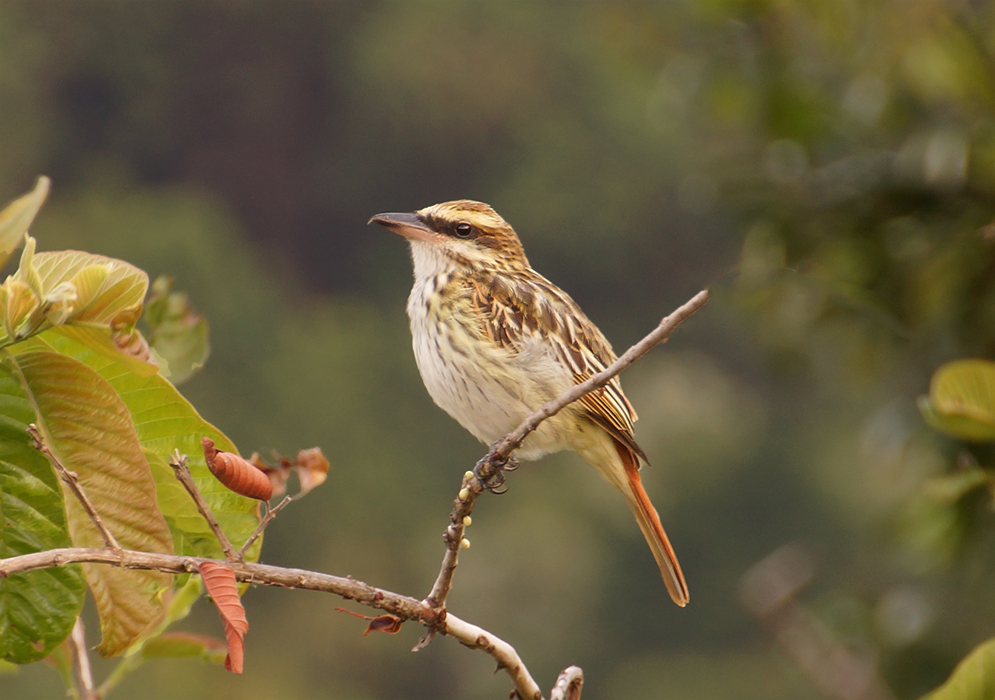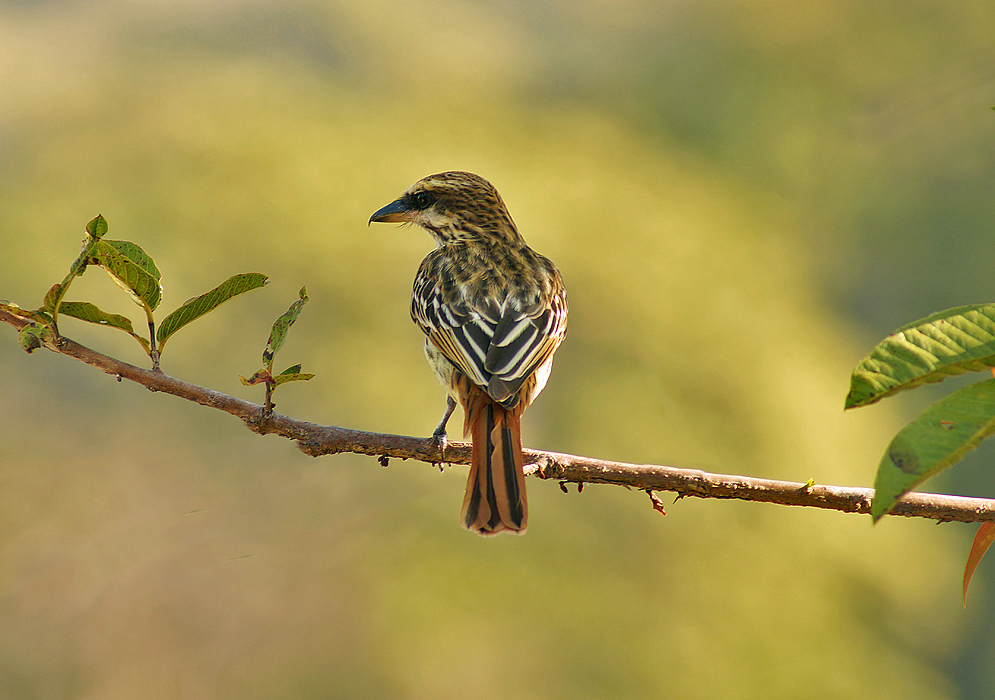This post has 11 Simple Fields-fields attached. Show fields.

The Streaked Flycatcher, measures approximately 8.7 inches in length and weighs around 1.5 ounces, with a strong black bill. The Streaked Flycatcher's head is brown with a hidden yellow crown patch, a white supercilium, and a dusky eye mask. Its upperparts are brown with darker streaks, rufous and white edges on the wings, and wide chestnut edges on the rump and tail. The underparts are yellowish-white streaked with brown. In terms of habitat and distribution, the Streaked Flycatcher is found across a wide range in the Americas. Its breeding range extends from eastern Mexico, Trinidad, and Tobago south to Bolivia and Argentina. Interestingly, the southern subspecies M. m. solitarius migrates to Venezuela and the Guianas from March to September during the austral winter. This species is commonly found at the edges of forests and cocoa plantations. As for its conservation status, the Streaked Flycatcher is classified as Least Concern by the IUCN with the total population of more than 5,000,000 individuals.The diet of the Streaked Flycatcher is diverse, primarily consisting of large insects like cicadas, locusts, and beetles, but also includes lizards and berries. It exhibits interesting foraging behavior, perching on high watchpoints and performing aerobatic maneuvers to catch insects in mid-flight or off plants. In winter, the southern migrants incorporate a considerable amount of fruit into their diet. The species also occasionally follows mixed-species feeding flocks, pouncing on prey flushed by other birds. When it comes to nesting, the Streaked Flycatcher builds an open cup nest of twigs and grasses in tree hollows or bromeliads. The female incubates a typical clutch of two or three creamy-white, red-brown spotted eggs for about 16-17 days, with both parents feeding the chicks until they fledge in another 18-21 days. These birds inhabit a variety of environments, including subtropical/tropical mangrove vegetation, moist lowland and montane forests, swamps, dry savannas, and even heavily degraded former forests. They can be found at altitudes ranging from sea level to 3000 meters. Photographed in the Sierra Nevada de Santa Marta, Colombia.



